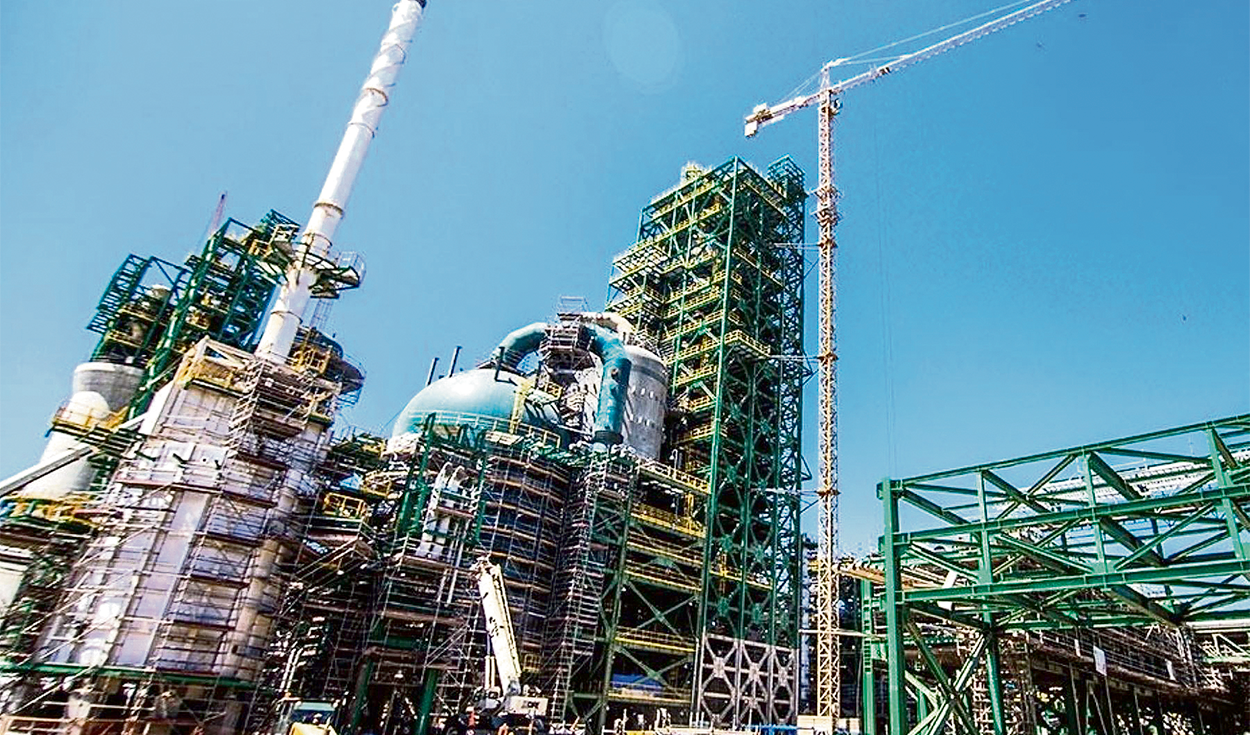
After 100% completion of the gradual boot process, and reach the daily production cap of 5,000 barrels per day of LPG, the New Talara Refinery (NRT) completed its first discharge of this fuel to supply and provide energy security to the northern regions of the country.
Petroperú, the company responsible for the refinery complex, reported that the start-up of the last two NRT units (flexicocking and catalytic cracking) will allow more competitive LPG prices to be offered to the domestic market, by reducing the import load of finished fuel.
Pedro Chira, president of the Petroperú board of directors, informed La República that, at the plant level, LPG already has a 10% reduction in its production costs, which will translate to the final consumer (vehicles and housewives) to through the taps associated with the state oil company in the so-called Petrored.
“Our commercial sector is working with Petrored so that the plant price is reflected to the end user. At the domestic level, it would be a reduction of between S/4 and S/6 per kitchen ball,” Chira said.
It should be noted that Petroperú supplies the northern and northeastern regions of the country with an average of 5,000 barrels of LPG per day.
But the impact of NRT’s entry of LPG into the market also has repercussions at the national level. According to the head of the Ministry of Energy and Mines (Minem), Óscar Vera Gargurevich, this new production will mean the end of the long lines of tanker trucks in Lima every time there is a shortage of fuel in the north due to various factors.
“With this, Petroperú consolidates its role of providing energy security to the country, by reaching the most distant places and in the most complex moments, where the private company does not arrive,” Vera stressed.
positive margins
The implementation of the NRT will not only allow to alleviate the prices of LPG with a high incidence in the north of the country, but it will feed the national automotive fleet with other derivatives of crude oil such as diesel, gasoline and turbo with a low sulfur content.
Indeed, Minister Vera ratified that, after the delivery of the NRT, the strengthening of the oil company will materialize with its return to the operation of lots in Talara, where the reversal of fields I, VI, Z-69 and X is expected. (20,000 barrels per day of joint production crude).
“The refinery in its full operation is profitableand that margin allows them to have more competitive markers in their products and thus push prices down”, he highlighted.
In turn, the president of the Congressional Energy and Mines Commission, Segundo Quiroz, announced that next week the bill that seeks to strengthen Petroperú through the total reversal of the hydrocarbon lots whose contracts expire in national territory.
“Projects that generate impact and favor our population are becoming viable. The corresponding report has been made and we are insisting,” the parliamentarian added to this outlet.
Data
Advance. The NRT has been producing 88,000 bpd and is expected to reach 95,000 this month.
Spent. Since 2014, Petroperú paid US$6,777 million for Talara oil. If the production was in-house, the cost would be US$4.2 billion.
reactions
Pedro Chira, President of Petroperu
“Today Petroperú buys Talara’s crude at US$83 per barrel. Vertical integration with own lots will allow us to cut production costs in half and reinvest the flows from the fields.”
Oscar Vera, Minister of Energy and Mines
“Part of the process of the new contracts has been to declare Petroperú an economic subject, and we are happy that this has been the case. It will now be Perupetro who announces what is to come.”
Source: Larepublica
Alia is a professional author and journalist, working at 247 news agency. She writes on various topics from economy news to general interest pieces, providing readers with relevant and informative content. With years of experience, she brings a unique perspective and in-depth analysis to her work.












